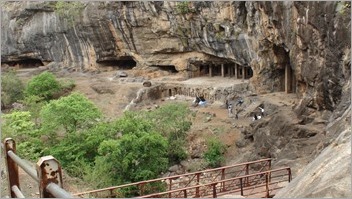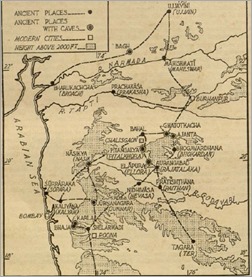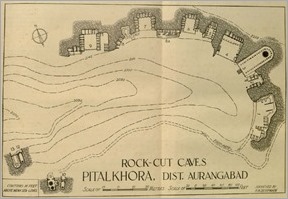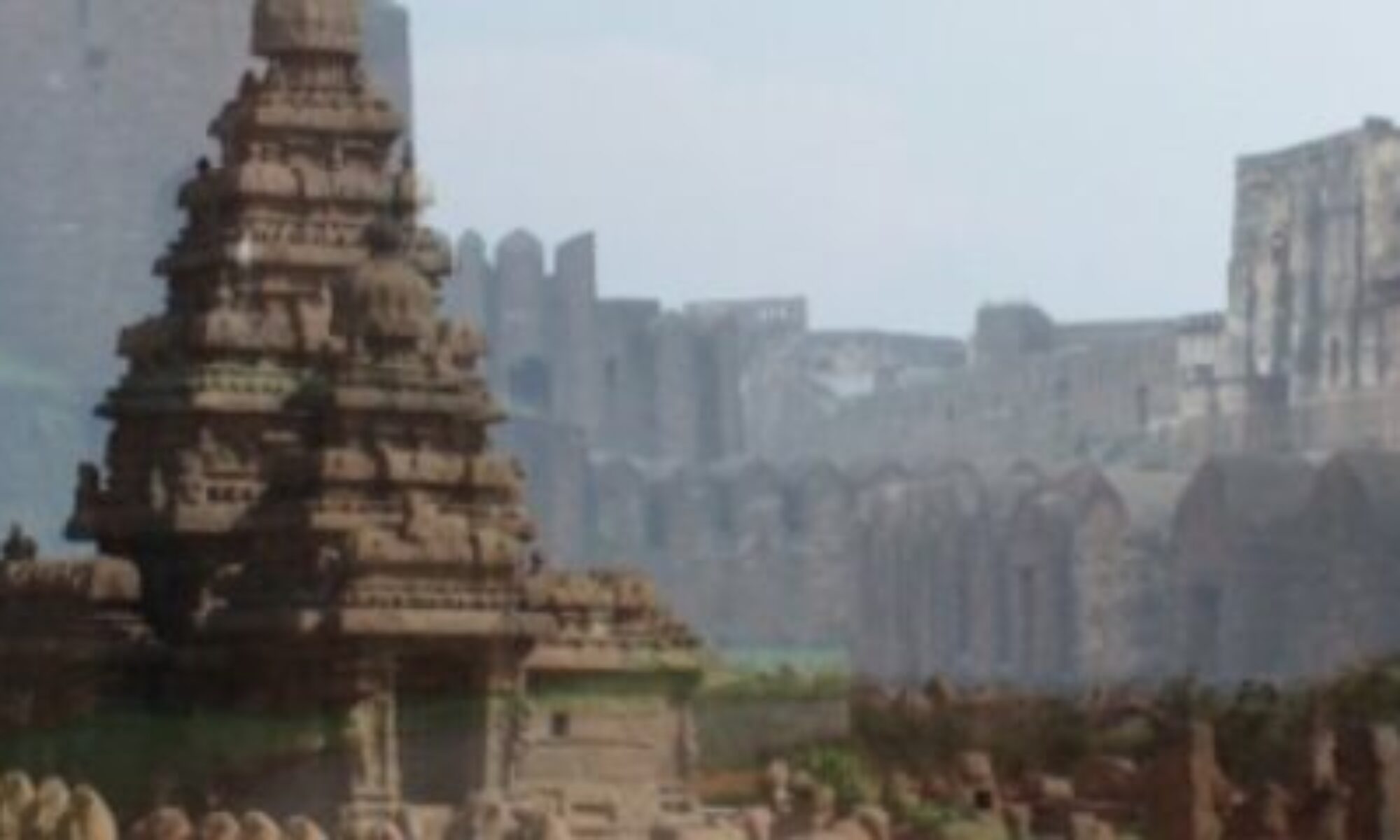It is not everyday that we find our roots. And when we find them, it becomes our responsibility to secure the immense culture that it imparts on us. Buddhism in its earliest form has attracted many businessmen, kings and all alike. Many kings funded monasteries and they flourished as centers of learning and devotion. The oldest Buddhist caves in India are in Barabar, Bihar dated 322-185 BC. At the same time one more series of rock cut caves have been carved in the Satamala range of the Western Ghats. Pitalkhora is considered to be da ted to the 3rd Century BC, making it the oldest in Central and South India.
ted to the 3rd Century BC, making it the oldest in Central and South India.
The caves are located on one side of the hills in the middle of a reserve forest on the way from Ellora to Ajanta. It is a group of thirteen caves, 30 kilometers from Ellora on the road to Chalisgaon. From the village of Bamarwadi, a track leads past the villages of Upla, Amba and Tanda to the caves which is in a dense forest. They are located in a wild picturesque ravine in the Deccan trap. From the elevated plateau overlooking the ravine by which they are situated is seen from a distance the formidable triangular hill of Khairama, at the foot of which are the remains of the medieval temples of Patan.
 Due to their in accessibility, they have not attracted wide attention, and earlier the group was considered to consist of nine excavations in the earliest accounts of 1853. Post clearing of the debris, four more were revealed on the opposite side of the ravine. Also bought to light were crystal relics, miniature stupas, inscriptions and some remarkable sculpture.
Due to their in accessibility, they have not attracted wide attention, and earlier the group was considered to consist of nine excavations in the earliest accounts of 1853. Post clearing of the debris, four more were revealed on the opposite side of the ravine. Also bought to light were crystal relics, miniature stupas, inscriptions and some remarkable sculpture.
The caves of Pitalkhora lay on an ancient caravan route (sarthavaha patha), depicted in the picture on the right.. Caravans from the Govardhana country (Nasik) and from Surparaka (Sopara in Thane District) crossed the Indyadri hill close to where the caves are located in order to reach their destination, Pratisthana,(Paithan), the capital of the Satavahanas.
The Buddhist text “Mahamayuri” mentions a yaksha called Sankari residing at Pitangalya.
Pratishthane cha Khanadakh
Pitangalyeshu Sankari Tarangavatyam Sukhavahah
Nasikye Sundaro yaksha Asango Bharukachchhake
Khandaka at Pratishthana, Sankari at Pitangalya, Sukhavaha at Tarangavati, Sundara at Nasikya, Asanga at Bharukachchha.
While Nasikya is Nasik and Bharukachchha is Broach on the Narmada estuary, Tarangavati may be Taranga (Mehsana District). What is more important for the present purpose is that Pitangalya has been identified with Ptolemy’s Petrigala and may also be regarded as the ancient name of Pitalkhora. If this is correct, the sequence of the place-names in the “Mahamayuri” almost follows the ancient Pratishthana-Bharukachchha route. In fact, the way in front of the cave leads through the jungle and ends at the Patnadevi temple, 6 kilometers away on foot and 38 kilometers by road. Pitangalya-Petrigala was evidently a township, the remains of which exploration may one day bring to light.
 On paleographical grounds, based on the inscriptions in Caves 3 and 4, they may be assigned to the 2nd century B.C. They share the characteristic with other excavations in this region of a long period of disuse after the first phase of Hinayana activity and their reoccupation in the fifth or sixth century A.D. it is customary to associate respectively these two phases, politically, with the Satavahana-Kshaharata and Vakataka regimes and, in terms of Buddhist sectarianism, with the Hinayana and Mahayana. The second phase did not produce any excavations or any extensive embellishments with sculptured figures of the Buddha or of Bodhisattvas, which is a regular feature elsewhere. In fact, there is not a single image of Buddha here, the only evidence of Mahayana occupation being the paintings of the Buddha in the chaitya.
On paleographical grounds, based on the inscriptions in Caves 3 and 4, they may be assigned to the 2nd century B.C. They share the characteristic with other excavations in this region of a long period of disuse after the first phase of Hinayana activity and their reoccupation in the fifth or sixth century A.D. it is customary to associate respectively these two phases, politically, with the Satavahana-Kshaharata and Vakataka regimes and, in terms of Buddhist sectarianism, with the Hinayana and Mahayana. The second phase did not produce any excavations or any extensive embellishments with sculptured figures of the Buddha or of Bodhisattvas, which is a regular feature elsewhere. In fact, there is not a single image of Buddha here, the only evidence of Mahayana occupation being the paintings of the Buddha in the chaitya.
Let us explore the caves in the next post….
